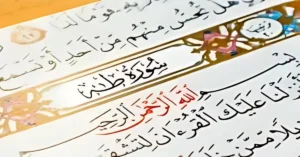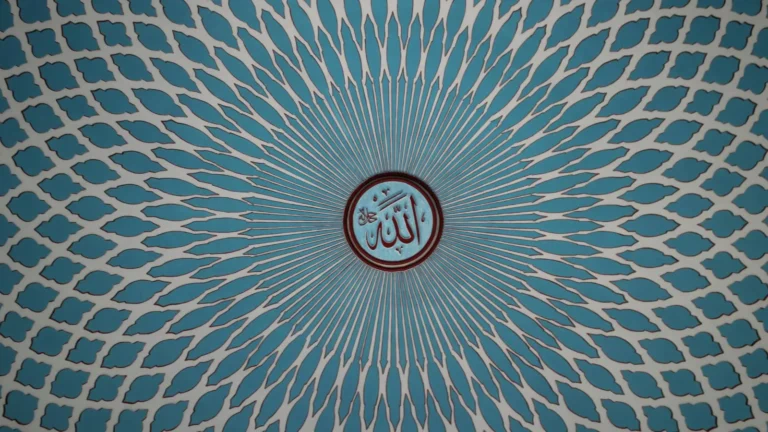Introduction to Sajda Sahw
Sajda Sahw, also known as the Prostration of Forgetfulness, is a significant part of Salah for all Muslims. It helps to rectify any errors made during Prayer and offers a chance to make up for forgetfulness or mistakes that may have occurred. If you forget a crucial element or perform an extra movement during Prayer, performing Sajda Sahw provides the perfect solution.
The introduction of Sajda Sahu is to show Allah’s (SWT) mercy and understanding towards His worshippers. This act of worship is a divine provision that demonstrates Allah’s (SWT) mercy and understanding of human nature. It reaffirms Allah’s (SWT) forgiving and compassionate nature, giving Muslims a chance to rectify their mistakes and seek forgiveness.
To better understand the structure and significance of worship in Islam, explore the Five Daily Prayers and their role in spiritual discipline.
When to Perform Sajda Sahw
Instances that require Sajda Saho in daily prayers might occur due to certain conditions. Although the specific cases may vary slightly among Islamic schools of thought, there are common scenarios outlined in Hadith and scholarly consensus. Here are some instances where Sajda Sahu becomes necessary:
Forgetfulness in Prayer (salah)
If a person forgets a pillar (rukn) or an obligatory act (wajib) in their Prayer, they should perform Sajda Sahw after completing the Prayer.
Hazrat Abdullah bin Buhaina Al-Asdi (ra) narrated that:
(the ally of Bani `Abdul Muttalib) Allah’s Messenger (SAW) stood up for the Zuhr prayer, and he should have sat (after the second rak’a, but he stood up for the third rak’a without sitting for Tashah-hud). When he finished the Prayer, he performed two prostrations and said Takbir on each prostration while sitting before ending (the Prayer) with Taslim; and the people, too, performed the two prostrations with him instead of the sitting he forgot.
Sahih al-Bukhari 1230
Addition or Omission of Elements in Prayer
If someone adds or omits an extra movement or action in their Prayer that is not part of the prescribed format, Sajda Sahw becomes necessary.
Hazrat Abdullah (RA) narrated that:
Once, Allah’s Messenger (SAW) offered five rak’at in the Zuhr prayer, and somebody asked him whether there was some increase in the Prayer. Allah’s Messenger (SAW) said, “What is that?” He said, “You have offered five rak’at.” So Allah’s Messenger (SAW) performed two prostrations of Sahu after Taslim.
Sahih al-Bukhari 1226
Doubt in the Number of Rak’ahs
If a person is unsure about the number of units (rak’ahs) they have performed in the Prayer and are in doubt between two possibilities, they should perform Sajda Sahw.
Hazrat Abu Sa’eed Al-Khudri (RA) narrated that:
The Prophet (SAW) said: “If one of you does not know whether he prayed three or four (rak’ahs), let him pray a rak’ah then prostrate twice after that when he is sitting. Then if he prayed five (rak’ahs), they (the two prostrations) will make his Prayer even-numbered, and if he had prayed four, they will annoy and humiliate the shaitan.”
Sunan an-Nasa’i 1239
Interruptions and Distractions
If a person is distracted during the Prayer due to an external factor or is interrupted in a way that affects the correctness of the Prayer, they may perform Sajda Sahw.
It’s important to note that Sajda Sahu is not a substitute for correcting major mistakes or missed actions in Prayer. If a fundamental aspect of the Prayer is missed or performed incorrectly, the entire unit of Prayer may need to be repeated.
It’s advisable to consult with a knowledgeable religious scholar or follow the guidance of the specific school one adheres to, as the details regarding Sajda Sahu may vary among different Islamic schools of thought.
How to Perform Sajda Sahw Correctly
Sajda Saho involves two prostrations (Sujood), followed by a recitation of tashahhud, durood, and dua. While the method of performing Sajda Sahu may vary depending on the school of Islamic thought, the basic principle remains the same. Below are detailed instructions on how to perform Sajda Sahw correctly according to the Hanafi school:
- After completing tashahhud in the final sitting position, turn your face only to the right with a salutation ((saying “Assalamu alaikum” to the right). Then say takbeer (Allahu Akbar).
- Perform two sajdahs, one after the other, peacefully.
- After the second Sajdah, sit again, read tashahhud again, then durood-e-Ibraahim (salutations upon the Prophet Muhammad (peace be upon him)), followed by dua (supplication).
- Complete the Prayer with salutations to both sides as usual.
To learn more about how to pray according to Sunnah, read our Comprehensive Guide to Prayer in Islam.
How to Perform Sajda Sahw After Salam
If you forget to perform Sajda Saho before the salutations, it’s not too late as long as you haven’t done anything to invalidate the Prayer. If you’ve turned away from the qiblah or spoken, for example, then you would need to repeat the Prayer. This flexibility ensures that your Prayer remains valid even when errors occur.
Shafi’i, Maliki, and Hanbali Schools
In these schools, the procedure for Sajda Sahw is generally similar to the steps outlined above. However, there may be slight differences in the wording of supplications or specific recommended actions during the prostration.
For instance, the Maliki school considers it a sunnah, performed with one takbir without salam. Similarly, the Hanbali school prescribes it before Tasleem following the final tashahhud.
It’s important for us to follow the practices of our respective schools, but when in doubt, seeking advice from a knowledgeable imam or scholar can provide clarity. This ensures that you perform Sajda Sahw correctly, honoring the traditions and maintaining the spiritual essence of your Prayer.
Common Questions and Misconceptions About Sajda Sahw
Q1. Can Sajda Sahw be performed at any time during the Prayer?
No, Sajda Saho should be performed after completing the Prayer, just before saying the Tasleem (salutation). It is performed in the final sitting (Tashahhud) before concluding the Prayer.
Q2. What if someone is unsure whether a mistake occurred?
If there is doubt about whether a mistake was made, the principle is to rethink if the doubt is right while continuing the Prayer. If you are successful in removing that doubt from your mind, then there is no need to perform the Sajda Sahu. But, if you are still uncertain about your doubts and the time for Salutations has arrived, then you should perform Sajda Sahw.
Q3. Is Sajda Sahw obligatory in every Prayer?
No, Sajda Sahw is not obligatory in every Prayer. It is only required when a mistake or forgetfulness occurs during the Prayer. If the Prayer is performed correctly without any errors, Sajda Sahu is not needed.
Q4. Can Sajda Sahw be performed for multiple mistakes in one Prayer?
Yes, if a person makes multiple mistakes or forgets multiple elements in a single prayer, they can perform a single Sajda Sahw to compensate for all the errors. It is not necessary to perform a separate prostration for each mistake.
Q5. How many Sajdahs are in Sajdah Sahw?
There are two sajdahs in Sajdah Sahw, done one after the other. After the second sajdah, you sit, recite Tashahhud, Durood, and finish the prayer as usual.
Q6. What if I forgot Sajdah Sahw?
If you forget to perform Sajdah Sahw, and you missed actual sajdahs during the prayer, you must make up the missed sajdahs after the prayer. As a precaution, you should also perform two Sajdahs of Sahw for each forgotten sajdah.
Conclusion
The practice of Sajda Sahw is mercy from Allah (SWT), allowing Muslims to correct their prayers and ensuring their acceptability despite human errors. It reflects Islamic teachings understanding and compassionate nature, accommodating the inevitability of human forgetfulness and imperfection. One can refer to authoritative Islamic jurisprudence texts or consult knowledgeable scholars in the field for more detailed rulings and explanations.









